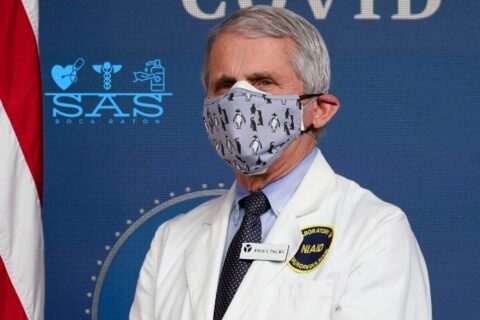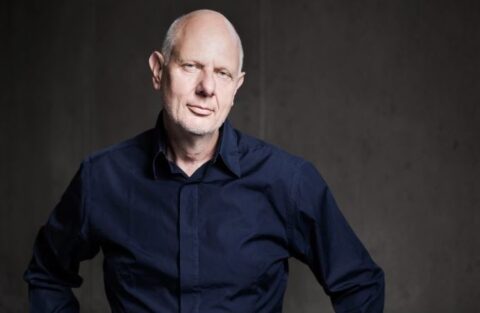For decades, sex scandals involving Roman Catholic clergy have been rocking the world’s largest Christian religion. What started out as isolated incidents in obscure parishes began to spread horizontally first across America and then across the world. It also spread vertically, embroiling the highest ranks of the Church as either actively engaging in salacious activities or covering them up on a grand scale. The suspicions and accusations stopped just short of the Pope – but that may be changing.
Concern about pedophilia pederasty within the cloistered confines of the institutional Church hierarchy was raised as far back as 1947 by Father Gerald Fitzgerald, whose order, the Congregation of the Servants of the Paraclete, functioned to aid troubled clergy – priests having difficulties with alcoholism, drug addiction and, most significantly, chastity. Through his work, Fitzgerald became aware of what he described as a growing culture of pederasty in the American Church.
Fitzgerald attempted to persuade bishops and even Pope Paul VI to take action. He recommended that corrupt clergy be removed from interaction with young boys. His concerns were never addressed, and the problem continued to grow.
In the 1970s, it was whispered that the Church was actively recruiting gay seminarians to bolster the declining ranks of the clergy. It was partially that gay recruitment was based on the belief that they would uphold the Church’s ban on clergy marriage. It was later alleged that the recruitment was led by priests and bishops responding to their own predilections. An article in Vanity Fair reported an estimate claiming that 20 to 60 percent of today’s Catholic priests are gay.
In the ensuing years, the Catholic Church suffered a series of scandals, each more serious than the former. In the 1980s, the American Church was again rocked by accusations. More and more victims were coming forward. It was no longer a matter of isolated incidents, the trail of accusations led to cover ups by bishops and cardinals. It was starting to reveal a significant culture within the Church.
The problem was not confined to America. Scandals popped up across the globe – Australia, Canada, Ireland and Chile — just to name a few. Suddenly, the Church was riddled with institutionalized pedophilia and pederasty. The culpability of the Church hierarchy went beyond cover-ups to participation. The sexual misconduct and the creation of sexual groups involved members of the College of Cardinals.
The globalization of the problem led critics to claim that such widespread moral and legal corruption – that the similar cover-up policies around the world – could not have happened without the knowledge and the guidance of the Church leaders in the highest offices in Rome. Supporting that theory was the falling from grace, and from office, of several prominent bishops and cardinals.
The number of bishops and cardinals accused of sexual impropriety stands at 88 from 30 nations. Sixty-four of the accused were cases of pedophilia, with most of those cases being homosexual in nature.
The problem has become so serious that a number of states in Australia passed laws that require priests to report child sexual abuse cases that are heard in confession. The Church is fighting back to protect the long standing “seal of confession” which bans the further revelation of any sin or crime confessed to clergy.
As is often the case, the cover-up becomes as serious a matter as the crime, itself. This has been particularly true for the Catholic Church. Investigators have found a pervasive pattern of ignoring allegations or taking defensive measures, such as moving guilty priests and bishops to new assignments – often where children would be part of their ministry.
For more than 70 years, since Father Fitzgerald first rang the alarm, the problem of pedophilia and pederasty has grown like a cancer in the Church. The number of clergy accused of criminality is in the thousands across the world, the number of known victims is in the tens of thousands. And, it is believed that greater numbers are yet to be discovered.
Despite the growing problem, the College of Cardinals, as an institution, and the Pope have not been dragged into the issue. Up until now, the popes have been perceived as the forces of reform. That assumption may be fading in the face of more facts and testimony.
Archbishop Carlo Maria Viganò, the former papal nuncio (ambassador) in Washington, released a statement in which he claims Pope Francis had not only been advised of specific cases, but that he acted to protect the perpetrators. Viganò elevated the issue to an unprecedented level when he wrote that Pope Francis’ participation in the cover-ups warrants his resignation.
Viganò specifically addressed the case of Cardinal Theodore McCarrick, the former archbishop of Washington, D.C. Evidence and testimony revealed that he had been having sexual relationships with altar boys and seminarians throughout most of his years in the Church – including as an auxiliary bishop in New York, the bishop of Metuchen, New Jersey and the archbishop of Newark, New Jersey. All these promotions came despite a series of complaints over many years.
Upon learning of his misdeeds, then-Pope Benedict had McCarrick removed from ministry and banned travel. Not only did Pope Francis lift the restrictions on McCarrick, but he took him as an advisor in naming bishops and cardinals, including his own successor, Cardinal Donald Wuerl, who has now been embroiled in controversy for covering up McCarrick’s immoral and criminal activities. Wuerl’s appointment was peculiar in that he was not on the list prepared for the Pope. It was Pope Francis’ personal decision based on McCarrick’s recommendation.
Critics within the Church have accused Pope Francis of creating what they call the “lavender Mafia” – a cabal of clergy with liberal views on clergy sexuality, including homosexuality. They are said to include those who both engage in pedophilia or protect those who do.
Though it has not received a lot of news coverage, Pope Francis’ is often dogged by protestors as he travels from country to country. The often carry large photographs of victims. In recent months, more and more protest signs have called for the Pope to resign.
The Pope’s public condemnations of errant clergy tend to only come after there is a major outbreak of news and protests. Critics point to his initial response to the pleas of victims during his trip to South America, when he warned against false accusations. He was confronted by the faithful protesting child sexual abuse by clergy at almost every stop on his tour of Argentina, Chile and Peru. It was only after he was back in Rome and the issue exploded in the media that he reversed himself and apologized to the victims. He has not yet taken any action against the accused.
The Catholic Church may be heading into the most significant institutional moral crisis since the Middle Ages. There are those who believe when all the facts are known, Pope Francis will be forced out of the papacy as a corrupt Pope. That may be a bit too speculative for this moment, but it is increasingly clear that the hems of the papal cassock may not be as pure white as they were once thought to be.




